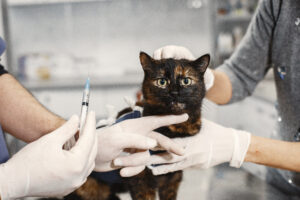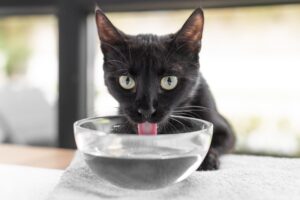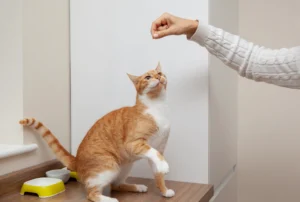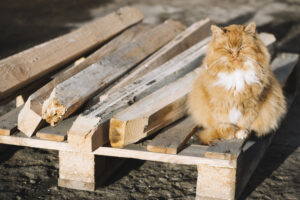Introduction
Medium long hair cats represent the perfect balance between the sleek elegance of short-haired felines and the luxurious fluffiness of long-haired varieties. With their moderately plush coats that don’t quite reach the extreme lengths of Persian or Maine Coon fur, medium long hair cats have become increasingly popular companions in American households. Their semi-long, flowing fur creates a majestic appearance while typically requiring less intensive grooming than their long-haired counterparts.
However, beneath this seemingly ideal compromise lies several challenges that prospective and current owners should be aware of. While medium long hair cats can make wonderful pets, they come with their own unique set of issues that might surprise even experienced cat owners. From unexpected grooming demands to specific health concerns, understanding these potential problems can help you provide better care for your medium long hair cat and make an informed decision before bringing one into your home.
In this comprehensive guide, we’ll explore four surprising problems associated with medium long hair cats, examine popular medium long hair cat breeds, compare them to their short and long-haired relatives, and provide practical solutions for addressing these challenges. Whether you’re considering adopting a medium long hair kitten or looking to improve care for your existing medium long hair cat, this article will equip you with the knowledge needed to ensure your feline friend lives their healthiest, happiest life.
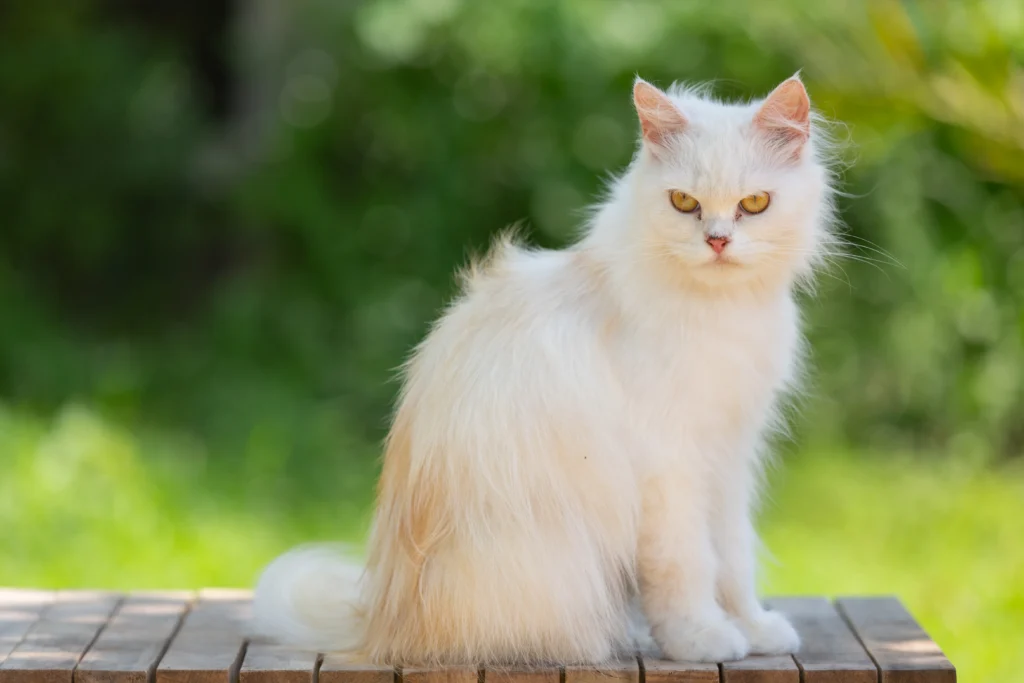
What Exactly Is a Medium Long Hair Cat?
Before diving into potential problems, it’s important to clearly define what constitutes a medium long hair cat. The term refers to cats whose fur length falls between the short, close-lying coat of breeds like the American Shorthair and the dramatically long, flowing fur of breeds like the Persian or Maine Coon.
Medium long hair cats typically have:
- Fur that extends 1-2 inches from their body
- A moderately fluffy appearance
- Hair that’s longer than short-haired cats but doesn’t reach the floor-sweeping length of long-haired varieties
- Often (but not always) a more pronounced ruff around the neck and fluffier tail
A domestic medium hair cat is the non-pedigreed version of these medium length hair cats – essentially the “mixed breed” equivalent. Just as domestic shorthairs represent the most common house cat in America, domestic medium hair cats comprise a significant portion of the feline population, especially in shelter and rescue environments.
Many people confuse medium hair cats vs long hair varieties, but the distinction lies primarily in fur length and density. Medium hair cat vs long hair comparisons often reveal that while both may require regular grooming, true long-haired breeds typically demand more intensive care routines.
Popular Medium Long Hair Cat Breeds
Several recognized breeds fall into the medium long hair cat breeds category. These include:
- Ragdoll: Known for their striking blue eyes and color-point coats, Ragdolls have silky medium long fur that doesn’t mat as easily as some other breeds.
- Norwegian Forest Cat: A natural breed from Scandinavia with a water-resistant medium long hair coat and sturdy build.
- Siberian: Hardy Russian forest cats with moderately long, triple-layered coats that help them survive harsh winters.
- Turkish Angora: An ancient natural breed featuring fine, silky medium length fur that flows elegantly as they move.
- Birman: Sacred cats of Burma with silky medium long fur and distinctive white “gloves” on their paws.
- Somali: Often described as the “fox-like cat,” Somalis are essentially medium long haired versions of Abyssinians.
- Balinese: Essentially a medium long haired Siamese, these cats combine the Siamese personality with a longer, silkier coat.
- Nebelung: A relatively new breed resembling the Russian Blue but with a medium long silvery-blue coat.
- LaPerm: Known for their distinctive curly medium length fur created by a natural mutation.
- American Bobtail: These cats often sport medium long hair combined with a shortened “bobbed” tail.
These best medium hair cat breeds offer various temperaments, body types, and specific coat characteristics, making it possible to find a medium long hair cat that matches your lifestyle and preferences.
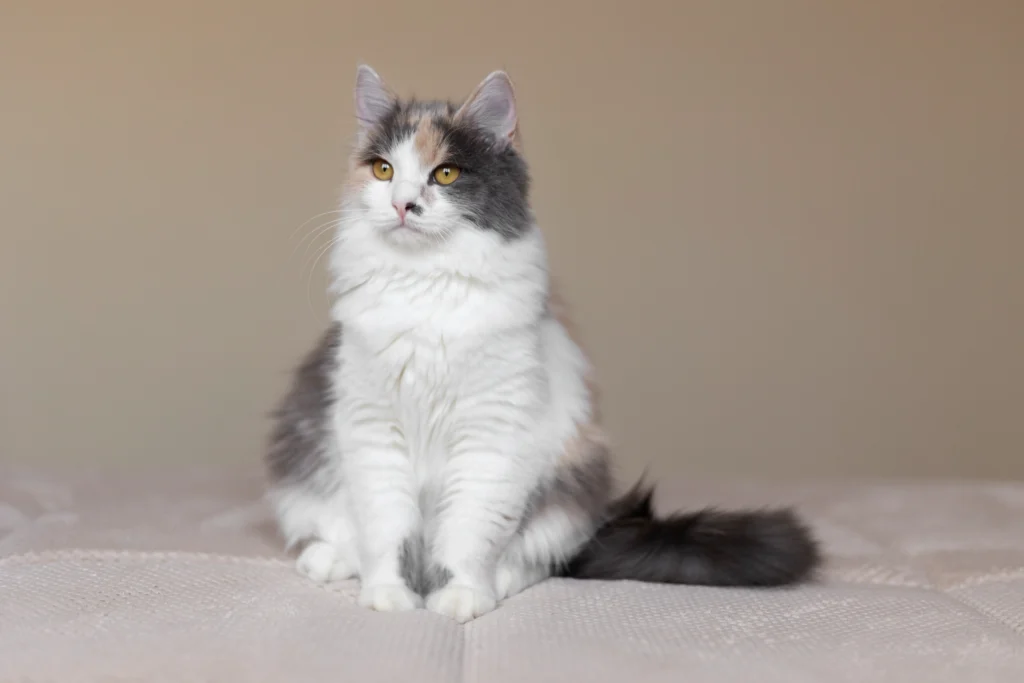
The 4 Surprising Problems with Medium Long Hair Cats
Despite their appealing appearance and moderate grooming needs compared to long-haired varieties, medium long hair cats present several unexpected challenges. Let’s explore these issues in detail:
Problem #1: Deceptive Grooming Requirements
One of the most common misconceptions about medium long hair cats is that their grooming needs are only slightly more demanding than short-haired cats. Many owners adopt a medium length hair cat expecting minimal maintenance, only to discover that grooming requirements can be surprisingly intensive.
The reality is that medium hair cat care often involves:
- More frequent matting than expected: Unlike true long-haired breeds whose owners typically anticipate and prepare for regular grooming sessions, medium long hair cats can develop mats that go unnoticed until they become problematic. Their fur is long enough to tangle but may not appear to need the same level of attention as obviously long-haired varieties.
- Seasonal shedding intensity: Many medium long hair cat breeds experience dramatic seasonal coat changes, especially those with undercoats. During spring and fall, these cats can shed enormous amounts of fur, creating household cleaning challenges and increasing the risk of hairballs.
- Hidden skin issues: The moderately long fur of a medium coat cat can conceal skin problems like parasites, allergic reactions, or infections until they become serious. Without regular grooming sessions that include skin checks, these issues may go undetected.
- Variable coat textures: Even within the same breed, medium long hair cats can have dramatically different fur textures. Some have silky, relatively easy-to-maintain coats, while others have woolly or cottony fur that tangles more readily.
Regular grooming medium hair cats should include:
- Brushing 2-4 times weekly (daily during shedding seasons)
- Monthly bathing for some breeds
- Regular checks for skin issues
- Professional grooming every 4-6 months
The deceptive nature of these requirements catches many owners off guard, as the grooming needs sit in an awkward middle ground—more demanding than short-haired cats but without the obvious necessity that comes with extremely long-haired breeds.
Problem #2: Hidden Health Vulnerabilities
Medium long hair cats can be prone to certain health issues that their shorter-haired counterparts may experience less frequently:
- Hairball complications: While all cats groom themselves and occasionally develop hairballs, medium long hair cats ingest significantly more fur during self-grooming. This can lead to more frequent and potentially dangerous hairball impactions that may require veterinary intervention.
- Overheating risks: During hot weather, medium long fur cats may struggle to regulate body temperature effectively. Their coats are substantial enough to cause overheating but may not trigger the same level of owner awareness as obviously long-haired breeds, who are more commonly monitored for heat stress.
- Parasite concealment: Fleas, ticks, and other external parasites can hide more effectively in the medium-length fur, multiplying before detection. This can lead to more severe infestations and related health problems.
- Litter box hygiene challenges: Medium length fur cats often collect litter particles and waste in their hindquarters fur, which can lead to hygiene issues if not regularly checked and cleaned. This is particularly problematic with softer, longer fur around the posterior.
- Ingestion hazards: The moderately long fur can trap small objects, chemicals, or substances that may be ingested during grooming. This creates risks of poisoning or intestinal blockage that might not occur as frequently with short-haired cats.
Vigilant health monitoring becomes essential for medium long hair cat owners, including regular weight checks (as obesity can be harder to detect under fluffier coats), careful observation during hot weather, and prompt investigation of any changes in grooming behavior.
Problem #3: Environmental Management Complexities
Living with a medium long hair cat creates home environment challenges that many owners don’t anticipate:
- Fur distribution: Unlike short-haired cats whose shedding may be less noticeable, or long-haired cats whose fur often falls in more visible clumps, medium long hair cats shed fur that seems to work its way into everything. The fur length is perfect for becoming airborne, infiltrating food, electronics, and clothing.
- Furniture and fabric damage: The moderately long guard hairs of fluffy medium hair cats can be surprisingly effective at catching on fabrics, potentially damaging furniture, clothing, and bedding in ways that aren’t as pronounced with short-haired varieties.
- Cleanliness perception: Even well-groomed medium length hair cats may appear less tidy than their short-haired counterparts simply because their fur shows disarray more readily. This can create a perpetual impression of untidiness despite regular grooming.
- HVAC system strain: The specific fur type of many medium long hair cats is particularly problematic for home ventilation systems. Their fur tends to be light enough to become airborne and circulate through the home, potentially clogging filters and reducing system efficiency.
- Allergen distribution: For individuals with mild cat allergies who may tolerate certain short-haired breeds, the moderate fur length of medium long hair cats can create more challenging allergen exposure as the fur distributes more widely throughout the living environment.
Addressing these issues requires more comprehensive home cleaning routines, strategic furniture choices, and possibly advanced air filtration systems—considerations that many prospective owners overlook when charmed by a medium long hair kitten’s adorable appearance.
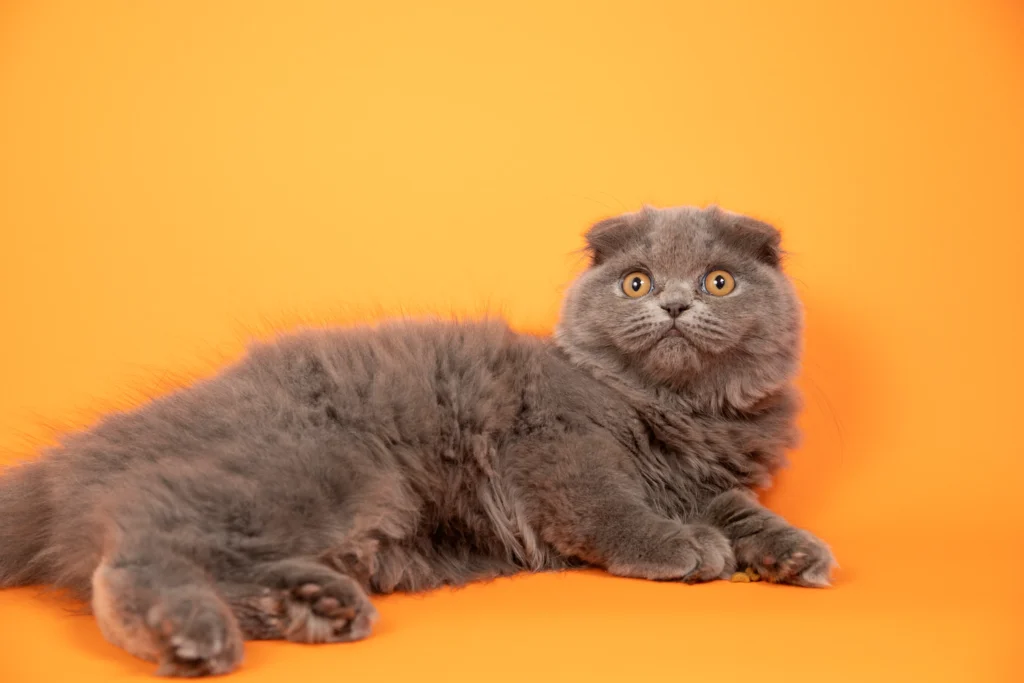
Problem #4: Behavioral Considerations
The final surprising problem relates to how the medium long hair cat’s coat can influence behavior and interaction:
- Grooming resistance: Many medium long hair cats develop grooming aversion, particularly if they weren’t accustomed to regular brushing from kittenhood. Unlike short-haired cats (who require minimal grooming) or traditional long-haired breeds (who are typically selected for tolerance of handling), medium long hair cats may fall into a problematic middle ground where grooming becomes a battleground.
- Temperature sensitivity behavior: These cats often display behavior changes related to temperature discomfort. During warmer months, a medium long hair cat may become irritable, lethargic, or begin over-grooming in attempts to cool down. Owners might misinterpret these behaviors as personality issues rather than connecting them to coat-related temperature regulation challenges.
- Static electricity sensitivity: The specific fur type of many medium long hair cat breeds seems particularly prone to static electricity buildup, especially in dry environments. This can make some cats jumpy, avoidant of petting, or unusually reactive to handling during certain seasons.
- Self-grooming obsession: Some medium long haired cats develop obsessive self-grooming behaviors as they struggle to maintain their awkward-length coats. This can lead to skin irritation, fur loss, and psychological stress that may require intervention.
These behavioral aspects represent the subtle intersection between physical characteristics and feline psychology—an often overlooked dimension of medium long hair cat ownership that can significantly impact the human-animal bond.
Medium Long Hair Cats vs. Other Coat Types
Understanding how medium long hair cats compare to their shorter and longer-haired relatives helps clarify their unique position in the feline world:
Medium Hair Cat vs Short Hair
When comparing a medium hair cat vs short hair varieties, several key differences emerge:
- Shedding pattern: Short-haired cats tend to shed individual, smaller hairs continuously throughout the year. In contrast, medium length hair cats often experience more dramatic seasonal shedding events while also maintaining some year-round fur loss.
- Weather adaptation: Short-haired cats typically handle hot weather better but may struggle more in cold conditions compared to medium long hair cats who have more insulation.
- Grooming needs: While a short-haired cat might thrive with weekly brushing, a medium long hair cat requires more frequent attention to prevent matting and excessive fur ingestion.
- Visual impact of aging: As cats age, medium long hair tends to show changes in texture and appearance more dramatically than short hair, often becoming more prone to matting and requiring additional care.
Medium Hair Cat vs Long Hair
The distinction between medium long hair cats and true long-haired breeds reveals important practical differences:
- Grooming expectation: Long-haired cat owners typically enter ownership aware of significant grooming requirements, while medium long hair cat owners may underestimate needed care time.
- Fur distribution: True long-haired cats often shed in more visible clumps that tend to remain localized, while medium long hair cats produce fur that distributes more widely through the environment.
- Professional grooming needs: Many long-haired cats benefit from regular professional grooming, while medium hair domestic cat varieties occupy a gray area where professional services might be helpful but aren’t obviously necessary.
- Seasonal variation: The appearance of many semi long hair cats changes more dramatically between seasons compared to consistently long-haired breeds, sometimes appearing almost short-haired during summer months only to develop significant fluff in winter.
This middle-ground position of medium length fur cat breeds creates unique challenges precisely because they don’t fit neatly into either the low-maintenance category of short-haired cats or the obviously high-maintenance category of long-haired varieties.
Solutions for Medium Long Hair Cat Owners
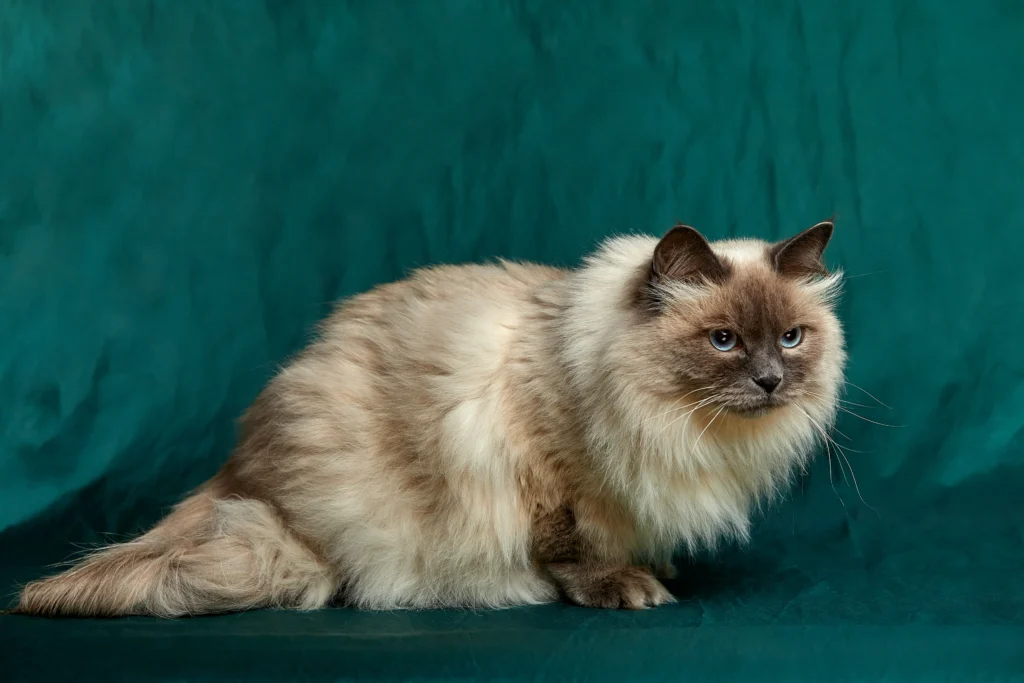
Despite these challenges, owning a medium long hair cat can be immensely rewarding with proper preparation and care routines. Here are effective solutions for addressing each problem area:
Grooming Solutions
To manage the deceptive grooming requirements of medium long hair cats:
- Establish consistent routines: Set specific days and times for grooming sessions rather than grooming “as needed,” which often means after problems have developed.
- Invest in appropriate tools: Select brushes and combs specifically designed for medium long hair cats. These typically include both wide-toothed combs for detangling and finer slicker brushes for removing loose undercoat.
- Consider specialized grooming tools: Products like the Furminator are particularly effective for many medium long hair cat breeds as they remove loose undercoat without damaging the guard hairs.
- Use preventative approaches: Apply pet-safe anti-static sprays or coat conditioners to reduce tangling in fluffy medium hair cats, particularly during dry winter months or seasonal shedding periods.
- Create positive associations: Make grooming sessions rewarding with treats, praise, and gentle handling to avoid developing grooming aversion.
Health Management Solutions
To address the hidden health vulnerabilities:
- Implement hairball prevention strategies: Regular brushing combined with specialized hairball-prevention foods or supplements can significantly reduce risks for medium long hair cats.
- Schedule seasonal veterinary checks: Arrange professional examinations that coincide with coat changes to catch any emerging skin or parasite issues early.
- Create cooling options: Provide cooling mats, well-ventilated resting areas, and consider summer coat trims for medium long hair cats in hot climates.
- Monitor hindquarters hygiene: Regular checks and gentle cleaning of the posterior area can prevent litter box-related problems common in medium length hair cats.
- Maintain preventative parasite control: Use veterinarian-recommended flea and tick prevention year-round, recognizing that parasites can hide more effectively in medium-length fur.
Environmental Management Solutions
For addressing home environment challenges:
- Upgrade your vacuum: Invest in a vacuum specifically designed for pet hair, ideally with HEPA filtration to capture the fine hairs of medium long hair cats that standard vacuums might miss.
- Implement strategic fabric choices: Select furniture with tight-weave fabrics that resist catching the fur of medium long hair cat breeds and consider washable slipcovers for key pieces.
- Establish fur-free zones: Use physical barriers, training, or deterrents to create certain areas of the home where your medium long hair cat doesn’t have access, reducing cleaning demands in these spaces.
- Install enhanced filtration: Add standalone air purifiers with HEPA filters in main living areas to capture airborne fur from medium long hair cats before it settles on surfaces.
- Use electrostatic cleaning tools: Microfiber cloths, electrostatic dusters, and similar tools can more effectively capture the distributed fur of medium length fur cat breeds compared to traditional cleaning implements.
Behavioral Management Solutions
To address behavior considerations:
- Start grooming early: Introduce kittens to brushing sessions from the earliest possible age to normalize the experience of being groomed.
- Recognize temperature discomfort signs: Learn to distinguish between general behavioral issues and those stemming from coat-related discomfort in your medium long hair cat.
- Create micro-grooming opportunities: Rather than lengthy sessions that might overwhelm your cat, implement brief, positive grooming interactions throughout the day.
- Provide self-grooming aids: Install corner brushes or grooming stations that allow your medium long hair cat to participate in their own coat maintenance between human-assisted sessions.
- Consider professional help: For cats with established grooming aversion, professional groomers experienced with medium long hair cats can often handle the situation more effectively and teach owners improved techniques.
Best Medium Long Hair Cat Breeds for Different Lifestyles
Different medium long hair cat breeds may be better suited to particular living situations and owner preferences:
For First-Time Cat Owners
Ragdolls often make excellent choices for novice medium long hair cat owners due to their generally placid temperaments and relatively manageable silky coats that resist matting better than some other medium long hair cat breeds.
For Active Households
Norwegian Forest Cats and medium long haired black cats with some Maine Coon heritage often thrive in busy, active households. Their robust nature and playful personalities make them adaptable companions, while their weather-resistant coats tend to be less prone to tangling despite their active lifestyles.
For Allergy-Sensitive Owners
Siberian cats, despite being fluffy medium hair cats, produce less of the Fel d 1 protein responsible for most cat allergies. This makes them potential options for slightly allergy-sensitive individuals who are drawn to medium long hair cats.
For Multi-Pet Households
Turkish Angoras and Birmans often integrate well with other pets due to their typically sociable natures. Their medium long hair requires regular maintenance but doesn’t tend to be as problematic as some other breeds when it comes to matting or excessive shedding.
For Apartment Living
The Balinese combines the compact size and vocal personality of its Siamese ancestors with a beautiful medium length fur coat, making these cats well-suited to apartment living where space might be limited but interaction is plentiful.
Frequently Asked Questions About Medium Long Hair Cats
How can I tell if my cat is a medium hair or long hair?
True long-haired cats typically have fur exceeding 2 inches in length, particularly around the ruff and tail. Medium long hair cats usually have fur between 1-2 inches long. Another indicator is how the fur behaves—medium long hair tends to stand away from the body slightly rather than flowing down in the dramatic way characteristic of long-haired breeds.
Do medium hair cats shed more than short hair cats?
Medium long hair cats don’t necessarily shed more individual hairs than short-haired cats, but the hairs they shed are longer and more visible. This creates the impression of heavier shedding. Additionally, many medium long hair cat breeds have undercoats that undergo seasonal “blowing coat” phases, resulting in periodic heavy shedding.
Are medium hair cats hypoallergenic?
Most medium long hair cats are not hypoallergenic. However, certain breeds like the Siberian, despite being a medium long hair cat breed, produce lower levels of the Fel d 1 protein responsible for most allergic reactions. Individual cats within other medium long hair cat breeds may also produce varying allergen levels.
How often should I groom my medium hair cat?
Most medium long hair cats benefit from brushing 2-4 times weekly during normal periods and daily during seasonal shedding. However, specific needs vary based on fur texture, lifestyle, and individual coat characteristics. Some medium long hair kittens develop thicker coats as they mature, requiring adjustments to grooming frequency.
Can I shave my medium long hair cat in summer?
While some professional groomers offer summer cuts for medium long hair cats, complete shaving is generally discouraged as it removes the coat’s natural insulating and protective functions. “Lion cuts” or partial trims may be appropriate for some medium long hair cats who struggle with severe matting or overheating, but this should be discussed with your veterinarian and performed by a professional groomer familiar with medium long hair cat coat types.
Conclusion
Medium long hair cats offer a compelling combination of aesthetic appeal and manageable care requirements that position them between the minimal grooming needs of short-haired cats and the intensive care routines of long-haired varieties. However, as we’ve explored, these beautiful felines come with their own surprising challenges that prospective owners should carefully consider.
From unexpectedly complex grooming needs and hidden health vulnerabilities to environmental management challenges and behavioral considerations, medium long hair cats demand thoughtful care and preparation. By understanding these potential problems and implementing appropriate solutions, owners can enjoy all the benefits these magnificent companions offer while minimizing the drawbacks.
Whether you’re drawn to recognized medium long hair cat breeds like the Ragdoll and Norwegian Forest Cat or considering adopting a domestic medium hair cat from a local shelter, approach ownership with realistic expectations and proper preparation. With the right care routines, environmental modifications, and behavioral understanding, your relationship with your medium long hair cat can be a source of joy and companionship for many years to come.
For more information about cat breeds with medium long hair or specific care recommendations for your medium long hair kitten, consult with your veterinarian or professional groomer. You might also explore our related articles on cat grooming essentials and choosing the right cat breed for your lifestyle here at PetsPump.
References
- Cornell University College of Veterinary Medicine. (2023). “Grooming and Coat Care for Cats.” https://www.vet.cornell.edu/departments-centers-and-institutes/cornell-feline-health-center/health-information/feline-health-topics/grooming-and-coat-care-cats
- International Cat Association. (2024). “Recognized Breeds.” https://tica.org/breeds/browse-all-breeds
- American Veterinary Medical Association. (2023). “Cat Care: Grooming and Coat Health.” https://www.avma.org/resources/pet-owners/petcare/cat-care
- Journal of Feline Medicine and Surgery. (2022). “Coat Types and Associated Health Issues in Domestic Cats.” Volume 24, Issue 5, pp. 428-437.
- Cat Fanciers’ Association. (2024). “Breed Standards.” https://cfa.org/breeds/
- American Animal Hospital Association. (2023). “Feline Preventative Healthcare Guidelines.” https://www.aaha.org/aaha-guidelines/
- Journal of Veterinary Dermatology. (2022). “Comparative Study of Skin and Coat Disorders Across Feline Coat Types.” Volume 33, Issue 2, pp. 110-118.
- PetsPump. (2024). “Cat Grooming Essentials.” https://petspump.com/cat-grooming-essentials/



